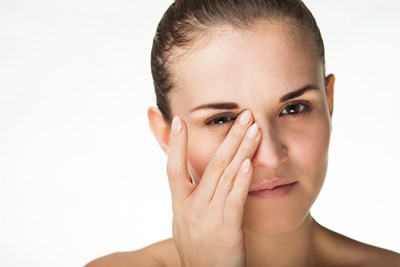The cornea is the clear lens that covers the front of the eye, acting as a protective barrier. As such, it is prone to a variety of injuries. Among these are corneal abrasions -- scrapes or cuts on the surface of the eyeball. Here’s a look at understanding the causes, symptoms, complications, treatments, and prevention of corneal abrasions.
Causes of Corneal Abrasions
The cornea lays over the pupil and iris, keeping them safe from dust, dirt, and other potentially damaging particles. Additionally, its shape provides a means of sending the rays of light that make up images through the iris and pupil, past the vitreous substance that fills out the eyeball, to the rear layer of the eye that makes up the retina. The retina then turns the rays of light into impulses that are passed up the optic nerve and into the parts of the brain that create images of those pulses. The eye is a very delicate piece of anatomy, requiring all parts to be in prime working order for vision to be clear.
Because of its function as a sort of safety net, the cornea itself is at an increased chance of injury. This can be because of something as simple as rubbing your eyelid too hard, inadvertently scraping the clear lens with a fingernail (or makeup brush or tree branch or just about anything else that gets close enough to your eye), or getting an eyeball full of dirt, sawdust, or other irritant. Other common causes of corneal abrasions include improper surgical protections, chemical contact, improper contact lens hygiene, or improper contact lense fit. Even excessively dry eyes can result in corneal abrasions. Whatever the case, the cells of the corneal epithelium (the top-most layer of cells on the cornea) are lost or damaged.
Symptoms of Corneal Abrasions
When the cornea is scratched, the whole process can potentially be interrupted. While an extremely minor scrape may cause no symptoms beyond a little bit of irritation, more serious injuries can impede vision considerably. Corneal abrasions may cause a discomfort ranging from pain to a scratchy sensation -- or even the feeling that something is actually stuck in the eye. The eye may have a reddish hue, varying from mildly pink to nearly solidly blood-covered. You may also notice excessive tearing or wateriness, and the eyelids may become swollen. Additionally, corneal abrasions can interfere with sight, causing blurry vision or sensitivity to light.
Complications of Corneal Abrasions
Corneal abrasions are often taken lightly -- because they happen so easily. And in many cases, they heal quickly and easily with little repercussion. In fact, in healthy eyes, it generally takes less than a week for the eye to return to normal. Unfortunately, this isn’t always the case. Deep corneal abrasions can become infected if left untreated, which can lead to serious issues with vision. Additionally, a corneal erosion can occur if the new cells are not firmly affixed to the cornea. Imperfect healing leads to the new cells being easily -- but painfully -- lifted back off the eye, sometimes by simply raising the lids after a long night’s sleep.
Diagnosing a Corneal Abrasion
To check for a corneal abrasion, your eye doctor will likely start with a standard vision exam. This will check the extent of the damage to the eye and visual intake. A slit lamp examination is also common. This involves the use of a magnifier with a bright light on the end, allowing ophthalmologists a well-lit, enlarged view of the surface of the eyes to check for abnormalities. Sometimes, the use of fluorescein dye can make this easier. The dye sticks to the damaged area and appears under a special light, showing exactly where the abrasion has occurred.



